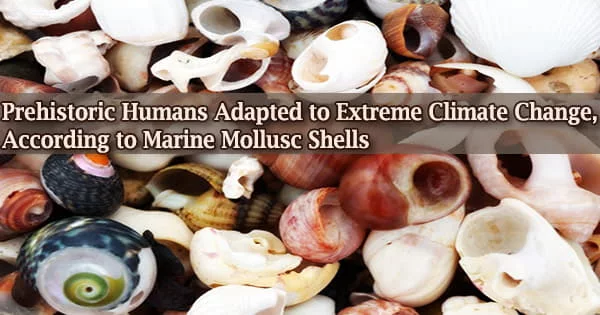The significance and repercussions of the ‘8.2 ka event,’ the largest abrupt climate change of the Holocene, for prehistoric foragers and marine ecology in Atlantic Europe, are revealed in a new multidisciplinary study led by ICTA-UAB researcher Asier García-Escárzaga.
Global climatic warming is having, and will continue to have, profound effects for human history, just as environmental changes in the past had important consequences for human populations.
The ‘8.2 ka event,’ triggered by cool meltwater from North American lakes flowing into the North Atlantic and halting ocean circulation networks, has been recognized as the greatest and most abrupt climatic event in the past 11,700 years.
The event’s cooling and drying impacts have been reported all throughout the world, especially along Europe’s Atlantic coast. Nonetheless, the 8.2 ka (kilo annum, or thousand years ago) event’s broad effects on various habitats and human societies are frequently assumed rather than confirmed.
A paper led by Asier Garca Escárzaga, current researcher at the Institute of Environmental Science and Technology (ICTA-UAB) and the Department of Prehistory at the Universitat Autnoma de Barcelona, and Igor Gutiérrez Zugasti, from the Universidad de Cantabria, was published in the journal Scientific Reports (UC).
Representatives of the Universidad de La Rioja (UR) and the Max Planck Institute (Germany) collaborated in the project, as did members of other academic institutions (Max Planck Institute, University of Burgos, Universidad Complutense de Madrid and University of Faro).
Our results suggest an ongoing application of local marine ecological knowledge by some of the last foragers in western Europe, despite major changes to climate and demography.
Asier García-Escárzaga
Shell remains obtained from the El Mazo cave’s shell midden site are studied using a multidisciplinary toolset of archaeomalacological research and stable oxygen isotope analysis (Asturias, N Spain).
El Mazo is a unique setting along the European Atlantic coast, with a 1,500-year stratigraphic sequence and particularly good chronological resolution of each archaeological layer.
These scientists were able to deduce from stable oxygen isotope levels recorded on marine shells that cooler seawater temperatures resulted in changes in the availability of distinct shellfish species.
For example, numbers of the warm-adapted P. lineatus, one of the most regularly consumed species, declined during the 8.2 ka event, while populations of the cold-adapted P. vulgata, another commonly exploited species, grew.
Surprisingly, the warm-adapted limpet P. depressa, which has a stronger resilience to cold temperatures than other warm-water species, increased during this frigid time.
Their findings also found a rise in human mollusk exploitation, as seen by a reduction in average snail size and signs of increased harvesting in more risky coastal locations.
The authors theorized that this occurred as a result of human population increase along the Atlantic coast, which served as a refuge during the cold spell, attracting people from further interior.
Nonetheless, inhabitants around El Mazo were able to avoid over-harvesting their coastal resources, as average mollusk size rarely fell below 20mm, the minimum size required by present restrictions to ensure species survival over the long term.
“Our results suggest an ongoing application of local marine ecological knowledge by some of the last foragers in western Europe, despite major changes to climate and demography,” says Asier García-Escárzaga lead author of the current study.
The high resolution provided by a combination of taxonomic, geochemical, and chronological analysis of mollusks from archaeological sites has major implications for other studies attempting to determine the impact of climate change on marine environments, as well as providing detailed clues to the magnitude and nature of future climate changes and their impacts on human societies.





